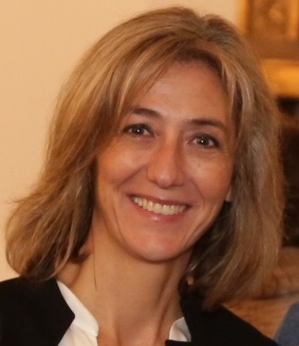COVID-19 as Seen From the Other Side: A Physician’s Experience Contracting the Virus
By: Rosa Cordovilla, MD, PhD
December 29, 2020
We started 2020 with a new disease. We saw it begin in China, and we received news that it was mild, with symptoms similar to those of a common flu. We were stunned, however, at how the Chinese quickly built a hospital to care for thousands of patients who had overwhelmed their hospitals with this kind of flu. But we were still calm because the disease was far away from us.
By February, however, we began to see patients in Spain with bilateral pneumonia and poor response to the usual treatment. In the pulmonary unit, we had to perform bronchoscopies on these patients to identify the cause of this "special" pneumonia. By then, we realized that the novel coronavirus disease that had emerged in China had also reached Western Europe. We were not aware of any special precautions for performing procedures on these patients.
When I started having fever, headache, and severe weakness on March 9, I immediately suspected that I contracted the coronavirus. I was afraid I would infect my colleagues and patients, so I stayed home. After 3 days, not only was I not getting better, but I developed anosmia and a skin rash. I managed to go to the hospital and have a PCR test performed.
It was no surprise that within a few hours, I was informed that I had tested positive for COVID-19. I was the first health-care worker diagnosed with COVID-19 in our hospital at the University of Salamanca. I was sent home to completely isolate myself, but it was too late. My husband, sister, brother-in-law, and several colleagues had all contracted the virus. That day, when she came back from school, my little girl couldn't help but cry when she heard the news. I was afraid—and felt guilty.
The next day, a state of emergency was declared in Spain. We couldn't leave the house. My eldest daughter was in a different city, and I couldn't let her come home for fear of contagion. As for me, I was isolated in my own room. I couldn’t cook for my family; I couldn’t see them even though we were under the same roof. I suffered loneliness, fear, and uncertainty. Nothing was really known about the disease I had contracted, and my fellow doctors did not know how to treat it.
COVID-19 kept affecting me more and more, and eventually I started having shortness of breath. Then my husband got worse; he couldn’t breathe. He had to go to the hospital and required oxygen. On television, the news was all about the large number of critically ill and dead patients every day. From my hospital, I got news of total collapse. The entire hospital was full of patients with COVID-19. We needed health-care workers; we needed more doctors.
I couldn’t think, eat, or even stand up…and I cried, quietly, so my daughter could not see or hear me. The only thing that helped was the encouragement from my family and friends, and I started valuing friendship and family more than ever before.
By the time my husband came home from the hospital, I started getting better as well. My family was fine, and all I wanted to do was go back to work. There was a need for extra hands! But what I understand now is that my job is much more than knowing how to make a diagnosis or offer a treatment. It is to be next to the patients and simply support them with humanity. I understand that the line separating patients from clinicians is very fine, and at some point, we are all patients—and we need the same love, understanding, and care. I am grateful for all the support I had when I needed it the most and for having the opportunity to share the same with my patients.

Rosa Cordovilla, MD, PhD, is the Director of the Interventional Pulmonology Unit at Salamanca University Hospital in Spain and an Associate Professor of Medicine at the University of Salamanca.